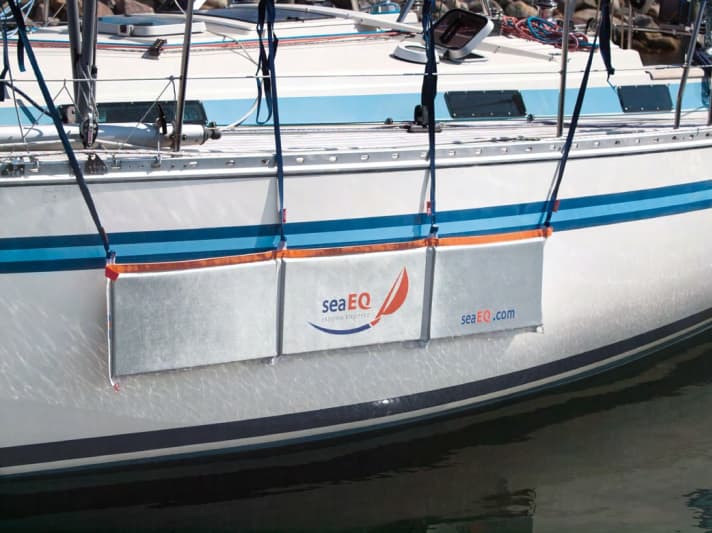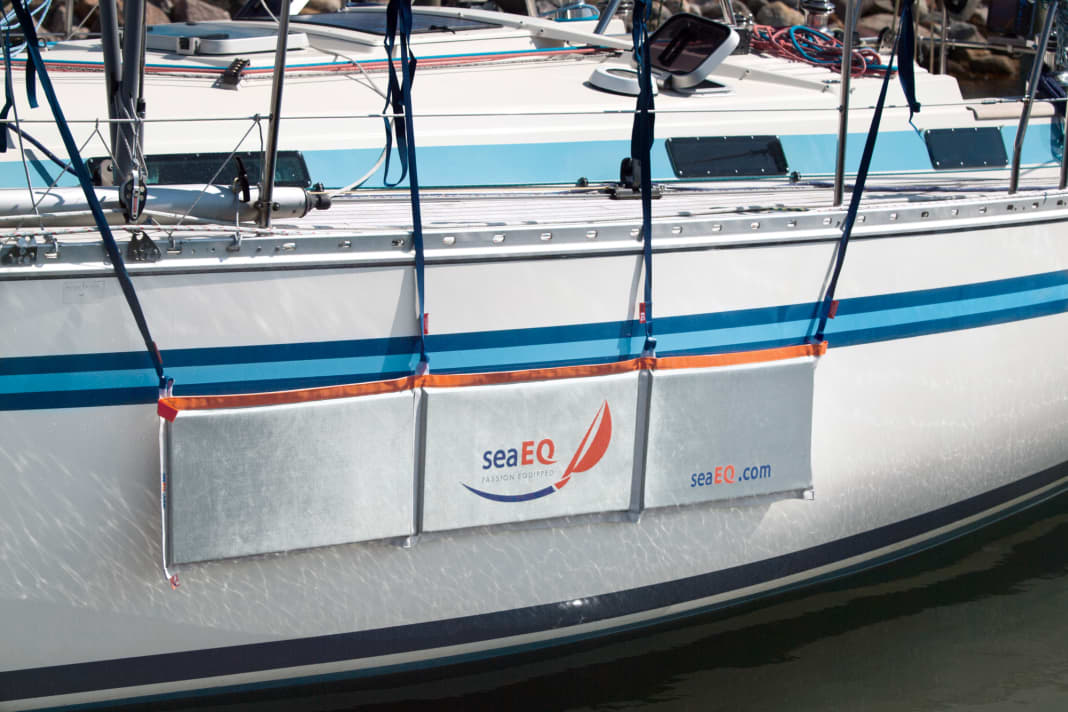




In this article:
In the past, the rubbing strake was often used to conceal the connection between the hull and deck and was standard basic equipment. In the meantime, the classic hull-deck connection has given way to an adhesive flange at many shipyards. This is located at the edge of the running deck and no longer needs to be hidden, which often means the end of practical scuff protection.
Notable exceptions are shipyards such as Hallberg-Rassy. For decades, the Swedes have relied on rubbing strakes moulded directly into the hull. This complicates mould construction and laminating work, and the narrow profiles tend to have air pockets. However, if the work is done carefully, the result is a very robust rubbing strake. As the fenders usually rest against the moulding, the system also protects against fine scratches from the rubber. The opposite approach is to use metal strips that are just a few millimetres thick, such as those found on X-Yachts or the current Dehler models. This looks elegant, but offers little protection.
Many owners are therefore faced with the task of finding a Retrofitting a scuff plate. The classic material is wood, but robust teak in particular is expensive and ethically questionable. However, there are alternatives for every taste and budget.
PVC and stainless steel systems for screwing and clipping
The rubbing strakes from Tessilmare and Wilks are particularly popular with motorboat shipyards. Both manufacturers offer extensive ranges which, depending on the model, are also suitable for retrofitting to sailing yachts. The mouldings usually consist of a support profile and a clip-on cover. There are versions for concealing the hull-deck connection and for mounting on smooth surfaces. Depending on the variant and thickness of the strip, a metre costs between 14 and 99 euros.
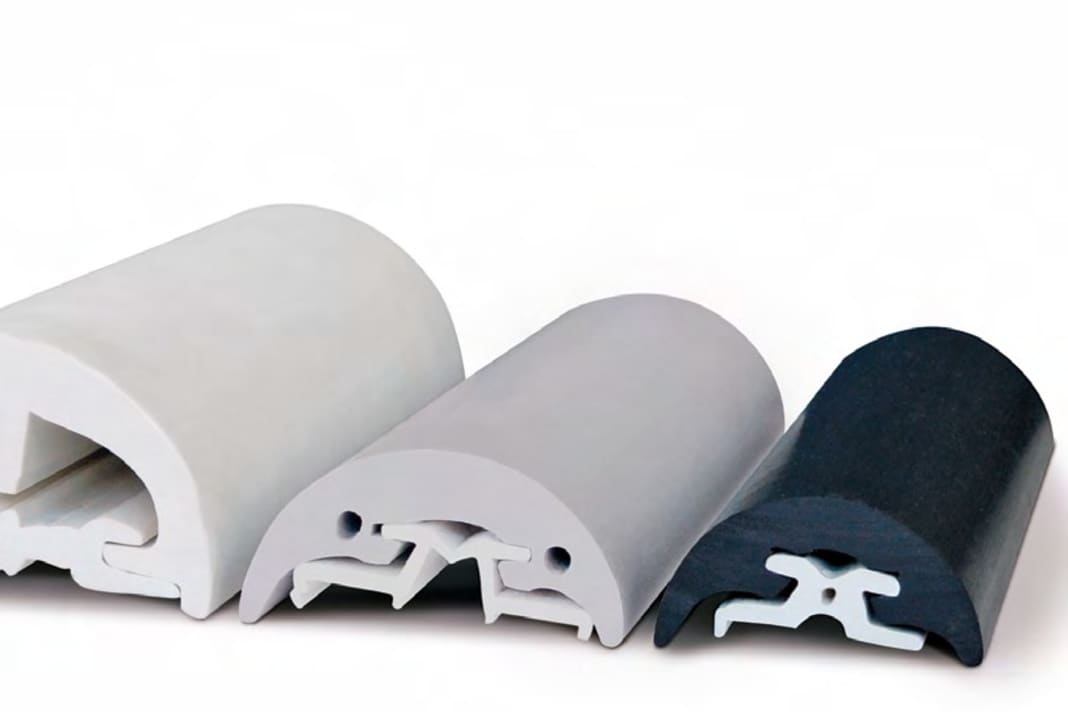




Most models can be bent around tight radii, which is practical when covering a hull-deck joint. You can easily fit them yourself as no special tools are required. The flexible plastic profiles are supplied as a ring. Only the metal versions Sphaera and Binox have joints. Tessilmare is distributed by Pfeiffer Marine. Wilks is available from Rüegg.
Wood reproductions
If you are looking for the look of a teak skirting board but don't want to install real wood, you will find alternatives from the manufacturers of PVC decking. First and foremost Flexiteek. The Norwegians offer special skirting board profiles in various dimensions. The most common size measures 40 by 20 millimetres and is supplied in ten-metre lengths. The ring costs around 370 euros. The wood grain is created when the PVC material is sanded with 60 grit.
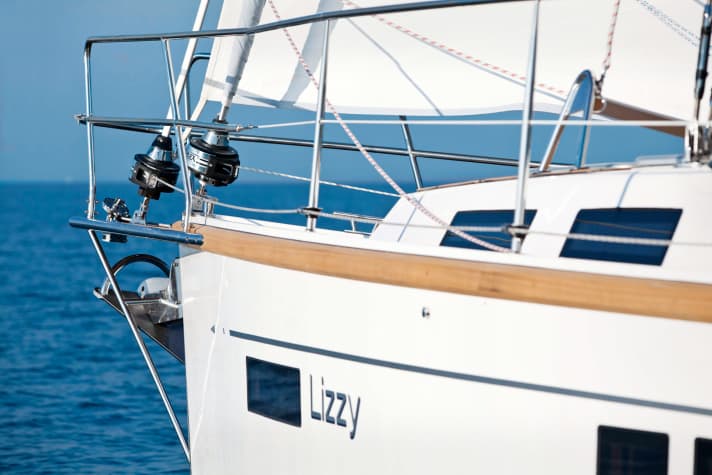
Temporary solutions
A classic wieling is the easiest way to protect the ship's side. A thick mooring rope is suitable for this purpose, which is tied off in the harbour. Liros offers such a ready-made product under the name Bumperline. Five metres cost around 130 euros.
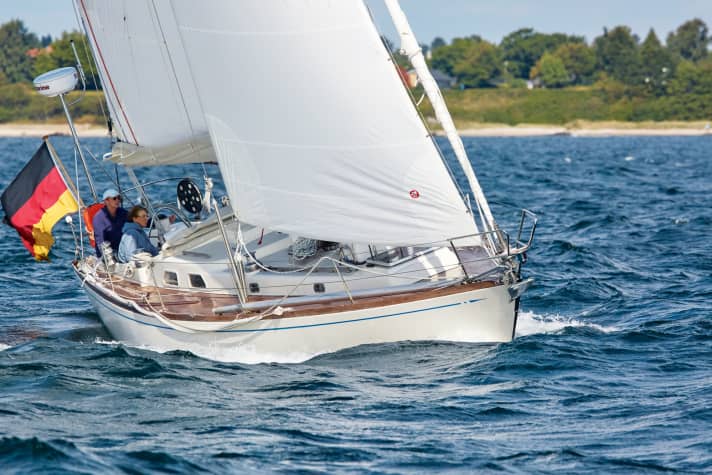
The long fenders from Seaeq also protect against scratches. When spread out, an area of around 2.1 by 0.4 metres can be padded with the 2.5 centimetre thick mat. When folded, the package is so firm that it can be used as a fender board. Price: 170 euros.
